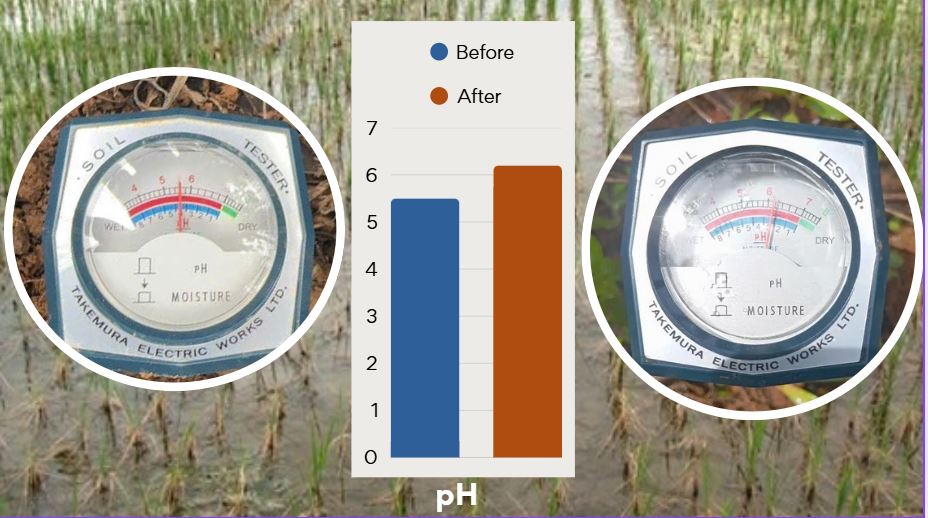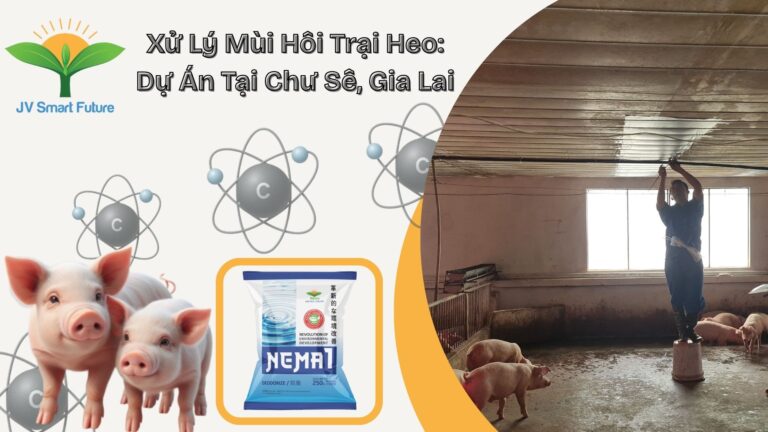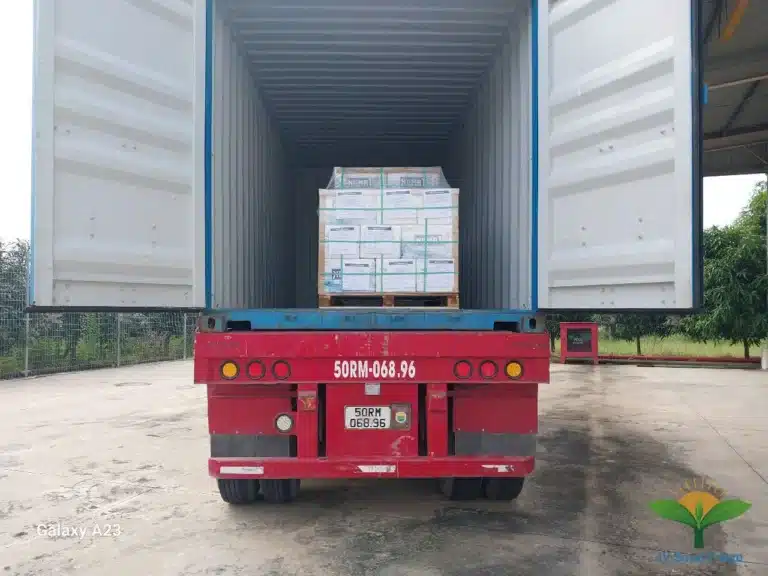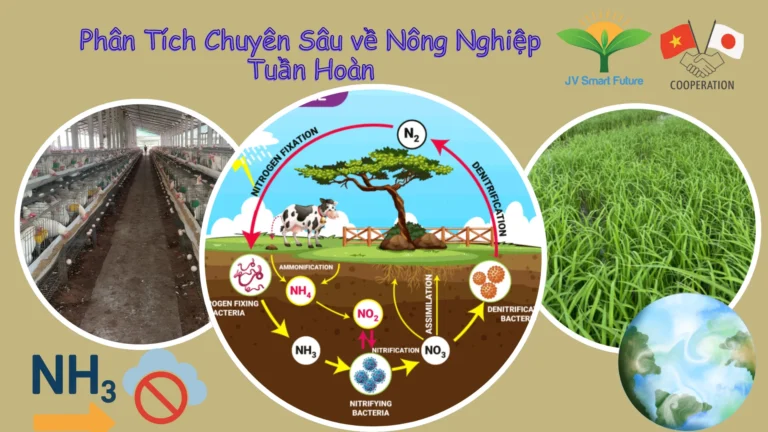Acid Sulfate Soils in Vietnam: A Comprehensive Analysis and Effective Reclamation Solutions
Acid Sulfate Soils (ASS) cover about 12% of Vietnam’s agricultural land (MARD, 2022), primarily concentrated in the Mekong Delta. This poses a significant challenge to food security and sustainable development. A thorough understanding of the nature, impact, and management solutions for these soils is not just a scientific issue but also carries profound socio-economic significance.
1. The Formation Process of Acid Sulfate Soils: From Potential to Active
The formation of acid sulfate soils is a complex geochemical process that occurs in two main stages, linked to the environmental shift from reducing to oxidizing conditions.
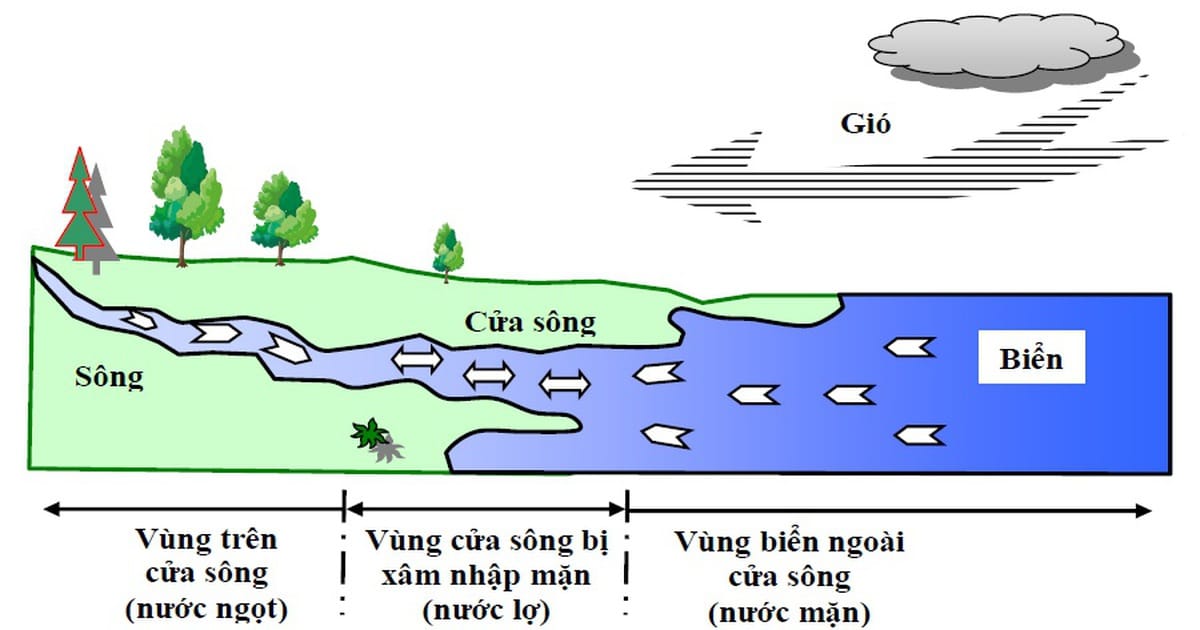
The intrusion of seawater and organic sediments creates the initial conditions for pyrite accumulation.
Stage 1: Pyrite Accumulation in a Reducing Environment (Formation of Potential Acid Sulfate Soils)
This initial stage occurs in coastal sedimentary areas, estuaries, swamps, and especially in mangrove forests. In anaerobic (oxygen-deficient) conditions due to waterlogging, sulfate-reducing bacteria convert sulfate (SO₄²⁻) in the water into hydrogen sulfide (H₂S). This H₂S gas then reacts with iron-containing compounds in the sediment to form iron sulfide minerals, most commonly pyrite (FeS₂). As long as the environment remains waterlogged, the pyrite remains stable in the soil. Soil in this state is called Potential Acid Sulfate Soil (PASS).
Stage 2: Pyrite Oxidation and Acidification (Formation of Actual Acid Sulfate Soils)
This stage is triggered when the pyrite-containing soil layer is exposed to air, often due to drought or human activities like digging canals or draining land for cultivation. When pyrite (FeS₂) is oxidized, it releases large amounts of sulfuric acid (H₂SO₄) and iron ions, causing a sudden drop in soil pH.
Soil in this state is called Actual Acid Sulfate Soil (AASS), causing severe toxicity to the environment and crops.
This creates a paradox: the very actions taken to “reclaim” land for agriculture can unleash its hidden toxicity.
2. Classification and Physico-Chemical Characteristics of Acid Sulfate Soils
Distinguishing between these two types of acid sulfate soils is crucial for effective land management and use.
Potential Acid Sulfate Soils (PASS)
- Characteristics: Contains unoxidized pyrite. The soil typically has a neutral pH, a dark gray or bluish-green color, and is always water-saturated.
- Risk: This type of soil is a “ticking time bomb.” As soon as the soil is drained or dried, the acidification process occurs rapidly, and the pH can plummet to below 2.0.
Actual Acid Sulfate Soils (AASS)
- Characteristics: The pyrite oxidation process has already occurred, creating a highly acidic environment.
- Extremely low pH: Often below 4.0, sometimes as low as 2-3.
- Distinctive colors: Appearance of straw-yellow streaks or spots of the mineral jarosite, or red and orange colors from iron oxides.
- Poor physical structure: When dry, the soil becomes rock-hard and develops deep cracks.
- High toxicity: Concentrations of soluble ions like aluminum ($Al^{3+}$) and iron ($Fe^{2+}$) are at levels toxic to plants.
- Nutrient deficiency: Phosphorus (P) and other nutrients become fixed and unavailable to plants.

Actual acid sulfate soils often become hard and cracked when water is scarce.
3. Current Distribution of Acid Sulfate Soils in Vietnam
Vietnam has approximately 1.8 million hectares of acid sulfate soils, equivalent to 5.5% of the country’s total land area. The distribution is mainly concentrated in key regions.
The Mekong Delta: The Epicenter of the Challenge
The Mekong Delta is home to the vast majority of Vietnam’s acid sulfate soils, with an estimated 1.6 million hectares, accounting for over 40% of the region’s total natural area. Major affected areas include the Plain of Reeds, the Long Xuyen Quadrangle, and the Ca Mau Peninsula.
Acid Sulfate Soils in Other Regions
Acid sulfate soils are also present in the Central Coast region and some northern coastal areas (like Kien An – Hai Phong), although the area is smaller and less documented.
Table 1: Estimated Area of Acid Sulfate Soils in Vietnam
| Estimated Area (million ha) | Proportion of Total Area / Agricultural Land | Key Regions Recorded | Reference Source |
|---|---|---|---|
| ~2.0 | ~40% of agricultural land (1996 data) | Nationwide | 1996 Study |
| 1.8 | 5.5% of total land area | Nationwide, including 1.6 million ha in Mekong Delta | Nguyen Khang et al., 1998 |
| 1.6 | >40% of Mekong Delta area | Mekong Delta | Multiple sources |
| – | ~12% of agricultural land | Mekong Delta and Central Coast | MARD, 2022 |
4. Negative Impacts of Acid Sulfate Soils on Crops
The harsh chemical properties of acid sulfate soils cause a range of direct and indirect negative effects on crop health and productivity.

Rice plants show yellowing leaves and poor growth in severely acidic soil.
Root System Damage from Low pH and Metal Toxicity
Extremely low pH and high concentrations of soluble aluminum ($Al^{3+}$) and iron ($Fe^{2+}$) inhibit root development, causing roots to become swollen, short, brownish, and lose their ability to absorb water and nutrients.
The Nutrient Paradox: Acidification Causes Nutrient Starvation
Acid sulfate soils cause nutrient deficiencies in crops even when fertilizers are applied. The most critical issue is phosphorus fixation. In an acidic environment, $Al^{3+}$ and $Fe^{3+}$ ions react strongly with phosphorus (P), forming insoluble compounds that plants cannot absorb.
5. Traditional Solutions for Acid Sulfate Soil Reclamation: An In-Depth Analysis
To cultivate on acid sulfate soils, farmers have developed and applied a set of integrated solutions. These methods do not work in isolation but are highly complementary, forming a multi-layered intervention system for **acid sulfate soil reclamation**.
Water Management: The Foundation of “Leaching and Flushing”
This is the most critical measure, using fresh water to dissolve and wash away toxins and prevent further oxidation. This includes surface flushing, building an appropriate irrigation and drainage canal system, and maintaining a high water table to suppress acidification (“flooding to control acidity”). However, it requires an abundant supply of fresh water and high infrastructure investment costs.
Chemical Measures: The Role and Risks of Liming
Applying lime is the fastest chemical method to neutralize acidity and precipitate toxic metal ions. However, lime is a “double-edged sword.” Acid sulfate soils require very large amounts of lime, which is costly. Overusing lime can cause soil compaction, phosphorus fixation, nitrogen loss, and kill beneficial microorganisms.
Cultivation Practices: Adaptation and Optimization
These techniques help farmers “live with” acid sulfate soils effectively:
- Deep plowing and fallowing: Plowing to bring the acid-forming layer to the surface for thorough oxidation, then using water to flush out the acid before planting a new crop.
- Making high raised beds: Piling soil into high beds to create a thick, loose cultivation layer, isolated from the acidic groundwater.
- Crop selection: Using acid-tolerant crop varieties such as certain rice strains, pineapple, cassava, and melaleuca.
Organic Measures: Restoring Soil Vitality and Sustainability
Increasing organic matter is the most sustainable and comprehensive solution for **acid sulfate soil reclamation**. Organic matter improves soil structure (making it more porous), buffers pH, chelates (binds) toxic ions (rendering them inactive), and provides food to restore the soil microbial community.
Table 2: Comparative Analysis of Traditional Acid Sulfate Soil Reclamation Methods
| Method | Mechanism of Action | Advantages | Limitations & Risks |
|---|---|---|---|
| Water Management | Flushes and dilutes acids and toxins. Prevents oxidation. | Highly effective with sufficient water. Addresses the root cause. | Requires a large water supply. High initial infrastructure cost. |
| Liming | Chemically neutralizes acidity. Precipitates toxic $Al^{3+}$. | Fast-acting in adjusting pH. Reduces direct toxicity. | Requires very large doses/high cost. Risk of overuse causing soil compaction and P fixation. |
| Cultivation Practices | Exposes and flushes acid (fallowing). Creates a safe root zone (raised beds). | Low cost, practical for farmers. Very effective at the field scale. | Labor-intensive. Fallowing can have short-term negative impacts. |
| Organic Matter | Buffers pH. Chelates $Al^{3+}$. Improves soil structure. Nourishes microbial life. | Comprehensive, improves all aspects of soil health. Sustainable and long-term. | Slower acting. Requires large quantities. |
6. Technological Innovation: Evaluating “Organic Carbon” Products
Alongside traditional solutions, products like “Organic Carbon” from Japan represent an advanced technological approach, based on sound scientific principles, that shifts the paradigm of **soil reclamation** from simple chemical neutralization to multi-functional physical inactivation.
Mechanism of Action
This product, created from highly processed cellulose, operates through the following mechanisms:
- Acidity Neutralization: With its alkaline nature (pH > 8), the product directly neutralizes soil acidity, similar to lime.
- Adsorption and Inactivation of Toxins: This is the most distinct and crucial mechanism. Thanks to its porous carbon structure with a large surface area, it actively “captures” and isolates toxic ions like $Al^{3+}$ and $Fe^{2+}$, preventing their uptake by plant roots.
- Biological Stimulation: Creates a safe habitat, helping beneficial soil microorganisms to recover and thrive.

Significant improvement in soil pH is evident after using advanced soil conditioners.
Product Certification
The Japanese Agricultural Standard (JAS) organic certification that the product holds is a strong validation that it is safe for use in organic agriculture. It serves as proof of the product’s origin, effectiveness, and quality, guaranteed to a high standard.
Learn more about the Organic Carbon product7. Synthesis and Strategic Recommendations
Sustainable management of acid sulfate soils requires an integrated approach. An effective strategy is not to choose a single solution, but to intelligently combine multiple measures in sequence:
- Foundation: Establish a water management system to control water levels and flush acidity.
- Field-level Intervention: Apply cultivation practices like raised beds and selecting tolerant crop varieties.
- Treatment and Restoration: Use lime cautiously for initial chemical treatment. For high-value crops or intensive restoration, technological products like Organic Carbon or high-quality organic fertilizers are a worthwhile investment for long-term soil health. The goal is holistic **acid sulfate soil reclamation**.
- Nurturing: Continuously add organic matter (manure, green manure, compost) to sustainably rebuild soil fertility.
Future Directions
The biggest current gap is the lack of independent research to evaluate new technologies in the context of Vietnam. Research institutes need to conduct field trials to validate effectiveness, determine optimal application rates, and perform cost-benefit analyses. By combining traditional experience with advanced technologies, we can move towards sustainable, high-efficiency agriculture on these challenging lands.
Read more academic research on Acid Sulfate Soils in the Mekong Delta